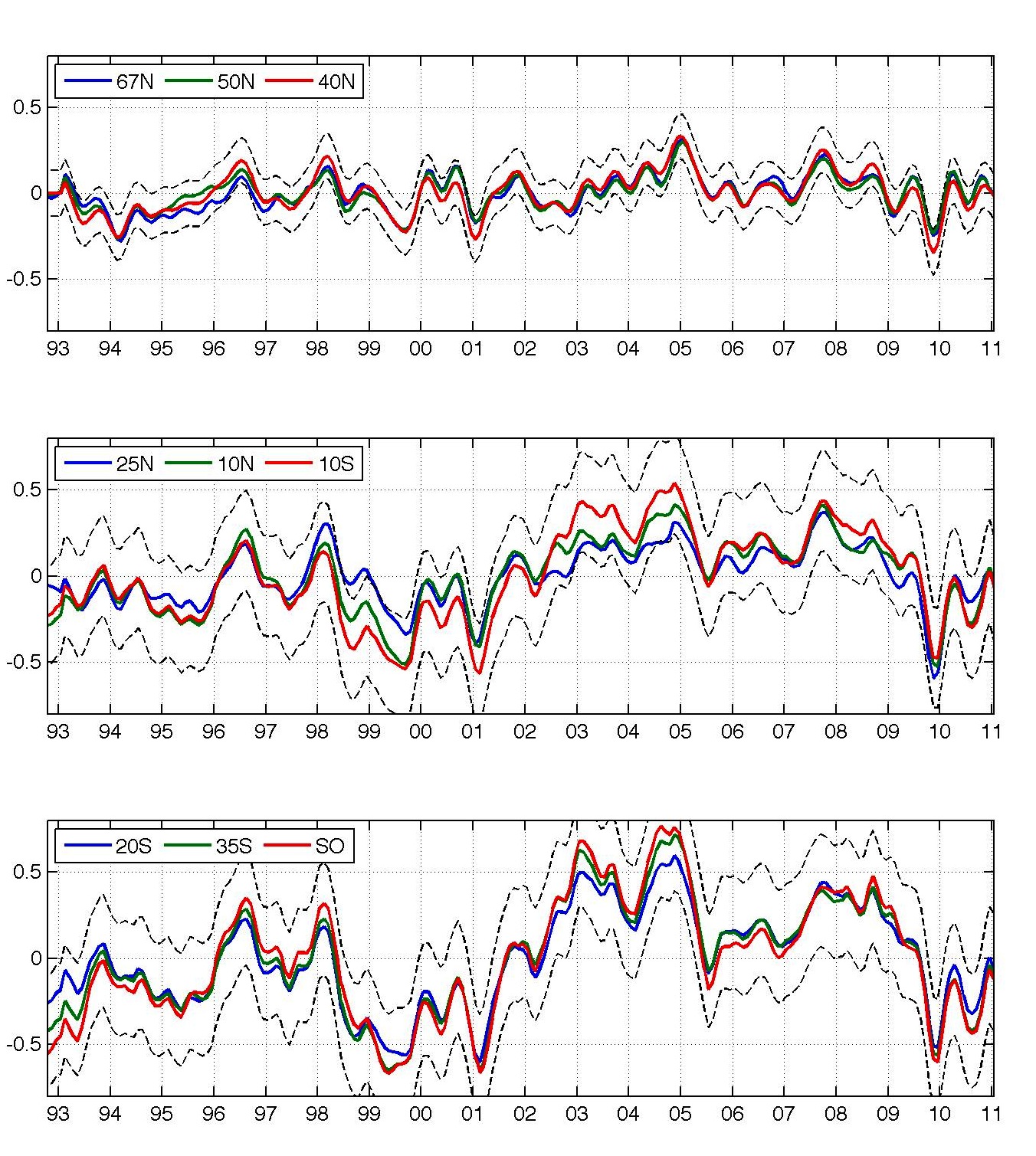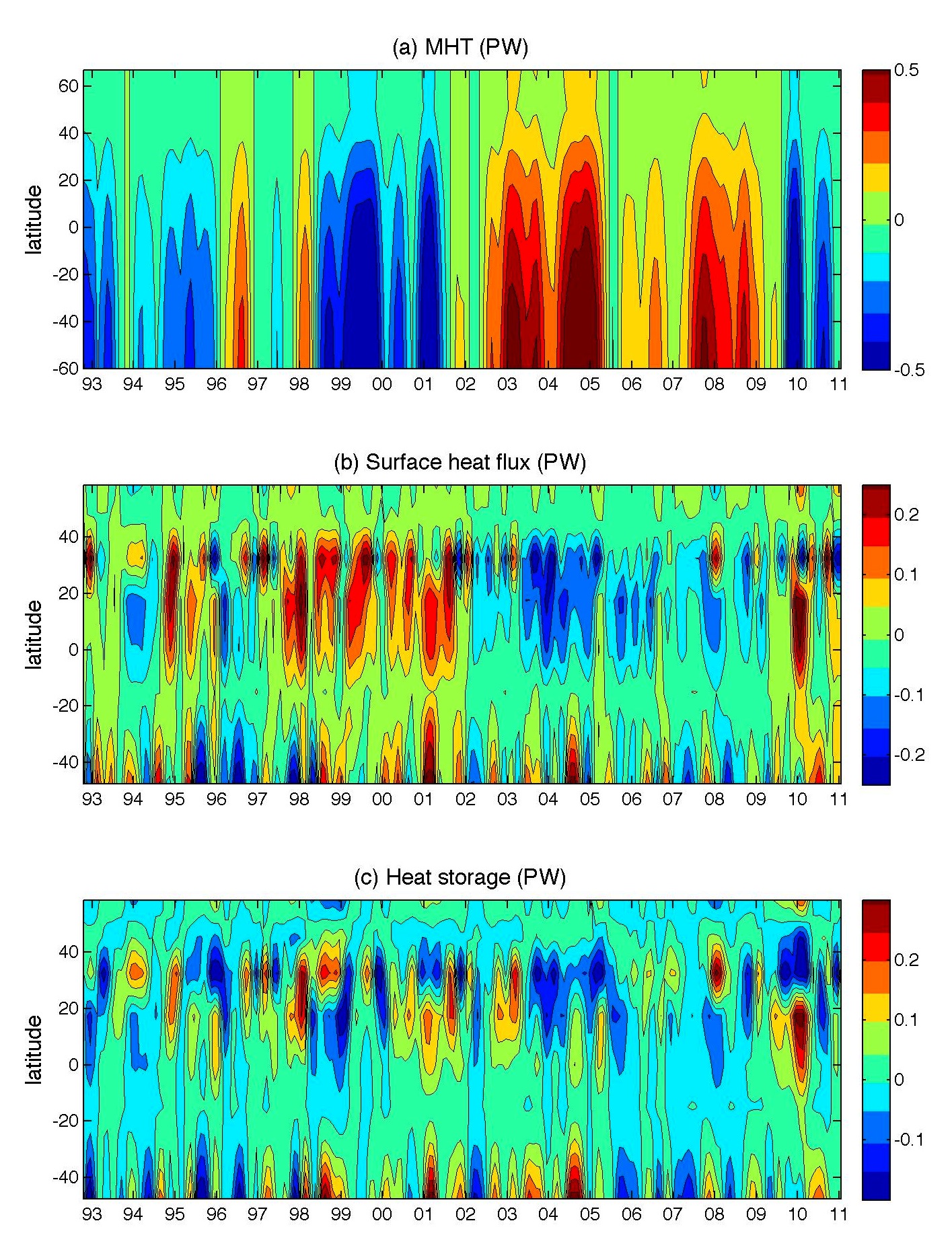Applied Physics Lab, University of Washington
LuAnne Thompson
School of Oceanography, University of Washington
John Lyman
NOAA/PMEL and JIMAR
Journal of Climate, 27 (4), 1469-1487
Observations of thermosteric sea level (TSL)
from hydrographic data, equivalent water thickness (EWT) from
GRACE and altimetric sea surface height (SSH) are used to infer
meridional heat transport (MHT) anomalies for the Atlantic
Ocean. An ``unknown control" version of a Kalman filter in each
of eight regions extracts smooth estimates of heat transport
convergence (HTC) from discrepancies between the response to
monthly surface heat and freshwater fluxes and observed mass and
heat content. Two models are used: Model A using only the heat
budget for 1993-2010 and Model B using both heat and mass
budgets for 2003-2010. Based on the small contributions of mass
to SSH, Model A is re-run using SSH in place of TSL to improve
temporal resolution data consistency. Estimates of MHT are
derived by summing the HTC from north to south assuming either
negligible anomalies at 67N or setting MHT to observed values
near 40N. Both methods show that MHT is highly coherent
between 35S and 40N. The former method gives a large drop in
coherence north of 40N while the latter method gives a less
dramatic drop. Estimated anomalies in MHT comparable to or
larger than that recently observed at the RAPID/MOCHA line at
26.5N have occurred multiple times in this 18-year period.
Positive anomalies in coherent MHT correspond to increased heat
loss in the North Atlantic subtropical gyre demonstrating the
feedback of oceanic heat transport anomalies on air-sea fluxes.
A correlation of MHT with the Antarctic Oscillation suggests a
southern source for the coherent MHT anomalies.
 |
 |